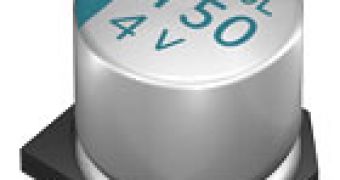The computer industry has been hit with a new trend, the one involving solid state capacitors being present on motherboards and graphics cards. Everybody remembers the electrolytic capacitors and the problems they made when exposed to high temperatures over long periods of time: they would burst open and fluid would leak onto the motherboard, or video card, and do some serious damage. But since new components required additional power and special voltages, more amps going through the power supplies? +12V rails, the need for a new type of capacitor was at hand and the computer industry came up with solid state capacitors.
These aren?t a novelty in the electronics industry, but have recently found a new home in computer hardware. Motherboards were the first to receive this kind of treatment, with the superior half of the motherboard using these solid state capacitors for an improved behavior of the northbridge and the power that went into the processor. Then the ?fashion? changed and the first all solid state capacitors motherboards appeared. Gigabyte was one of the first manufacturers to implement these changes to the PCB?s of their motherboards.
Using solid state capacitors in the power circuit of a motherboard or a video card ensures a more stable voltage output, with increased resistance to heat and no risks of leakage. However, where there is good, there could be better, and researchers at the Georgia Institute of Technology have proved this right by developing capacitors with twice the capacity by mixing barium titanate with a polymer matrix. The material could be the building ground for a new generation of capacitors, able to sustain much more than current products, although it?s currently based on liquid, and pose a potential security flaw: leakage.
Joseph W. Perry, professor at Georgia Tech School of Chemistry and Biochemistry and the Center for Organic Photonics and Electronics said in a statement: "Our team has developed nanocomposites that have a remarkable combination of high dielectric constant and high dielectric breakdown strength. For capacitors and related applications, the amount of energy you can store in a material is related to those two factors."

 14 DAY TRIAL //
14 DAY TRIAL //